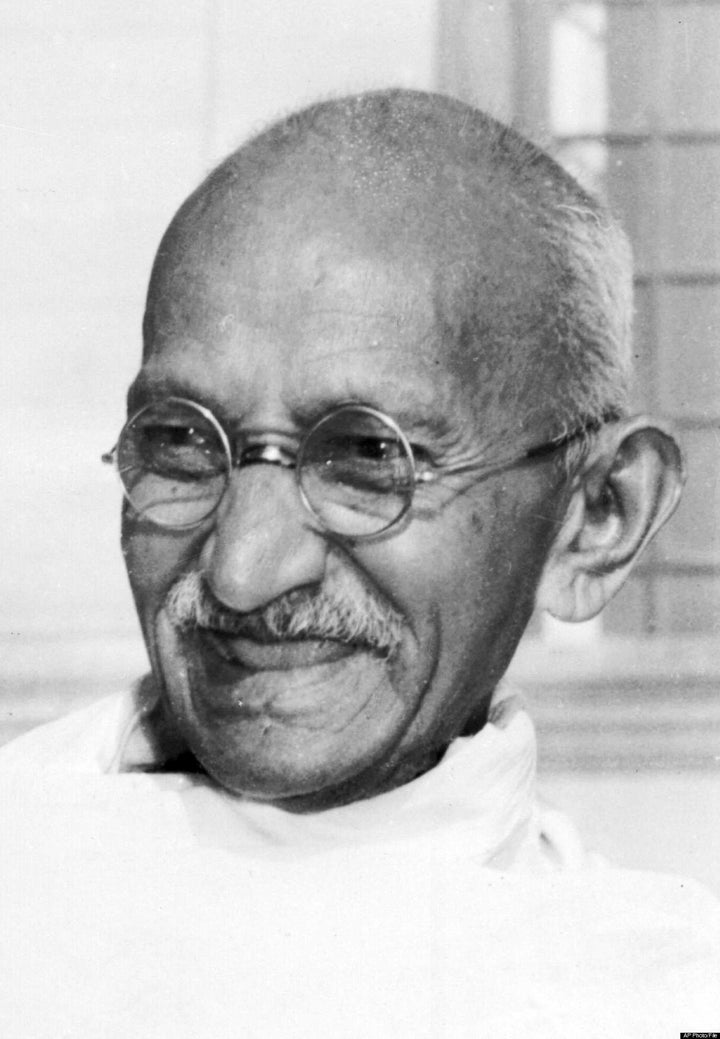
In 2007 the U.N. General Assembly adopted a resolution recognizing Mahatma Gandhi's birthday (October 2) as the "International Day of Non-Violence." The resolution highlights "the holistic nature and the continued relevance of the Mahatma's message for our times, indeed for all times to come. It encompasses the rejection of violence against oneself, against others, against other groups, against other societies and against nature." This year, Gandhi's birthday is an opportunity for the U.N. to think deeply about how Gandhian peacemaking can be relevant to its work of engagement, mediation, and reconciliation.
Although Gandhi is popularly remembered as an ascetic who was deeply connected to India's villages ("a half-naked fakir" as Winston Churchill famously called him), his background was actually cosmopolitan and global. Born into privilege, Gandhi studied to be a barrister in London, where he first became interested in Hindu and Christian scriptures. After experiencing a racially charged incident on a train to Pretoria, Gandhi spent more than 20 years pioneering his satyagraha strategy in South Africa. When he returned to India, it was as a British-educated lawyer who had lived and worked on three different continents.
Such a background was critical in informing Gandhi's sensibilities as a Hindu. Indeed, more than any other public Hindu, Gandhi's Hinduism most resonated with the popular Hindu ethos of "many paths, one truth," an approach that reflected his own life story. Gandhi's conception of Hinduism as a unified tradition characterized by its multiplicity of approaches is pluralistic at its core. In acknowledging that individuals may take different routes to reach the same destination, Gandhi's Hinduism builds into its framework mechanisms for cooperation and reconciliation, for mutual understanding and respect. Furthermore, given the fact that Gandhi had a multi-religious upbringing, his conception of Hinduism was deeply shaped by other religions as well, most notably by the Jain doctrine of ahimsa, the Muslim tradition of zakat, and the Christian ethic of the Beatitudes.
Gandhi's pluralistic and creative approach to Hinduism is evident in his reading of the Bhagavad Gita, a pan-Hindu theological text that he wrote more about than any other subject in his lifetime. In the Bhagavad Gita, Krishna counsels Arjuna on the battlefield and tells Arjuna that he must fulfill his duty as a warrior and fight, even if that means killing his own cousins. In order to address the philosophical dilemma of transforming the Bhagavad Gita into a peacemaking text for the Indian nationalist movement, Gandhi opted for an allegorical reading rather than a literal one. According to Gandhi, the battlefield represents the struggle of good against evil. This can be construed in an introspective manner for the individual, but can also exist as a social paradigm for political change. Because the battlefield is only a metaphor, there need not be violent connotations in the Bhagavad Gita. In this manner, Gandhi's interpretation allowed him to creatively downplay the prominent role of violence that is unavoidable in a literal reading, thereby empowering him to promote his own vision of non-violence.
There are many who dismiss the efficacy of Gandhi's satyagraha movement by arguing that Adolf Hitler was actually responsible for ending British rule in India, not Gandhi. Furthermore, there were many eloquent Indian advocates for violent insurrection that Gandhi had to contend with in his life, most notably Subhas Chandra Bose. For Gandhi, though, non-violence was the only choice because he believed that the process was as important as the result. According to Gandhi, violent action, regardless of the short-term outcome, is destructive and becomes the very cycle of oppression and injustice it seeks to eliminate. By focusing on the Indian philosophical doctrine of karma, of action and causality, Gandhi argued that sustainable peace could only emerge through genuine peacemaking, for a violent process would ultimately result in a violent outcome.
As one of the most influential Hindus and peacemakers, Gandhi's approach to peacemaking is instructive for the U.N. in a number of ways. He demonstrated the strategic wisdom of creating pluralistic structures that build peacemaking into their frameworks. He showed how doctrines and texts traditionally thought of as antithetical to peacemaking could be creatively reinterpreted for the purposes of peace. He proved that communities with contentious histories could come together over their common goals of peace and prosperity. And he utilized the uniquely Indian ideas of ahimsa and karma to promote both the process of peacemaking and the goal of a sustainable peace.